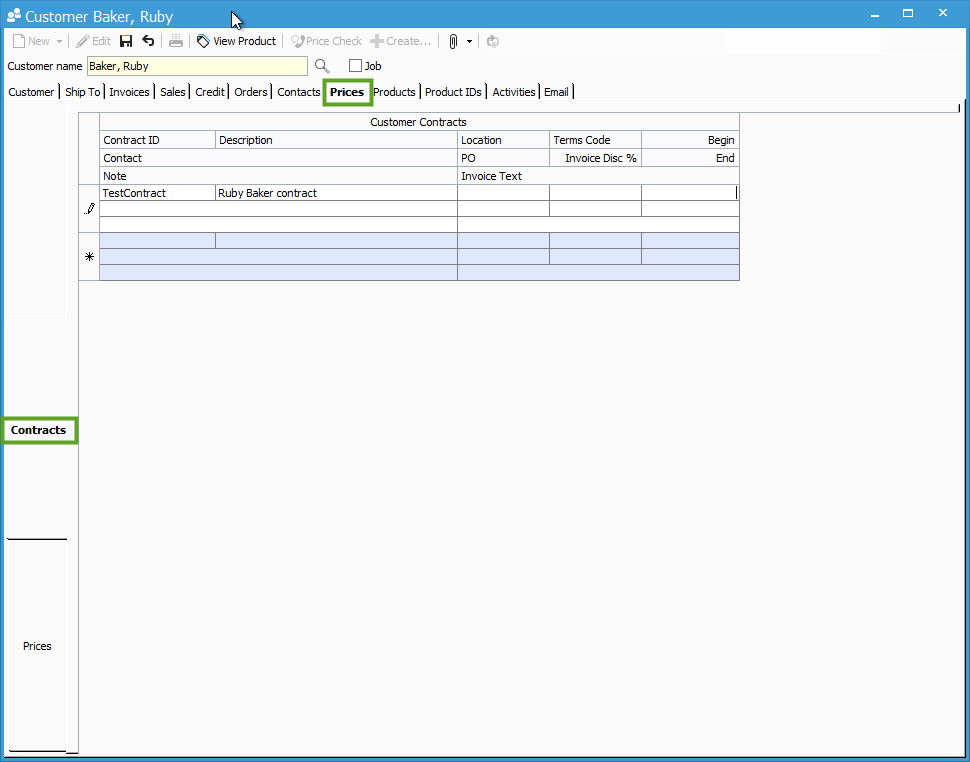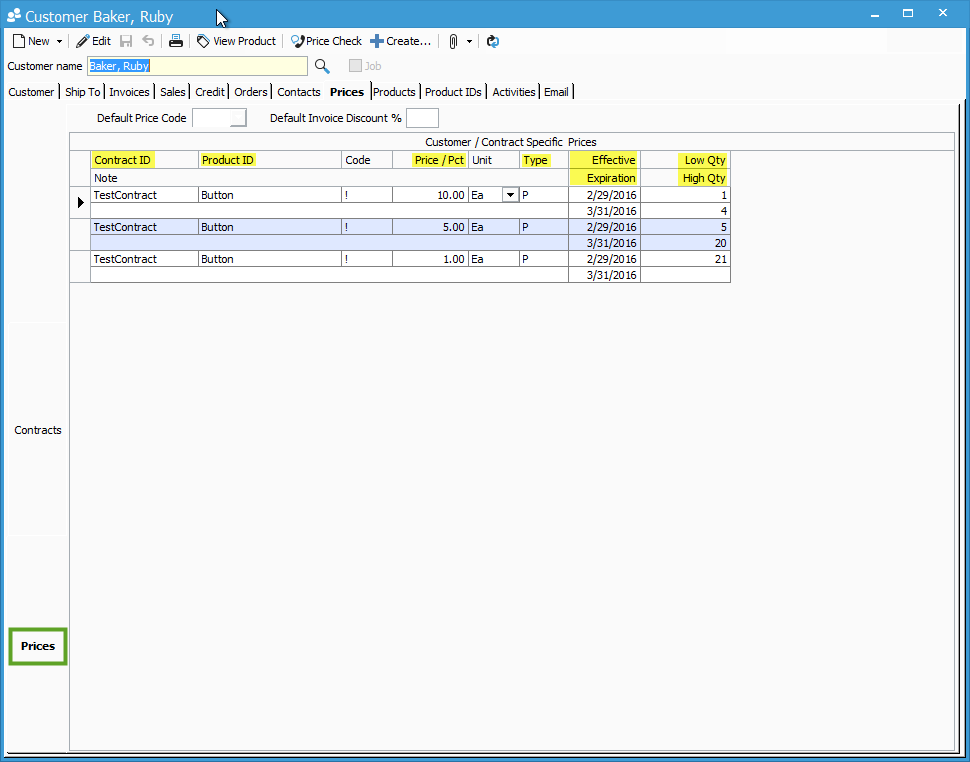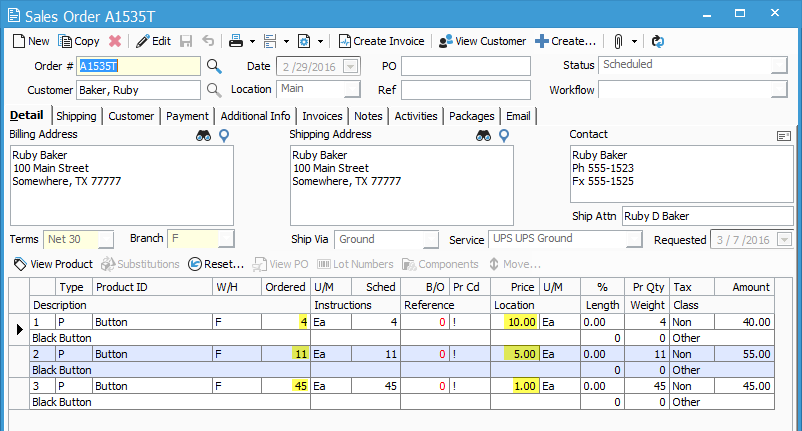Creating Customer Contracts.
Customer Contracts are Customer specific, and each product added can have a different Effective and Expiration date, as well as a Low and High quantity.
Customer Contracts
Customer Contracts are the first selection in the Acctivate Sales Price Selection list. This means that a Customer Contract price would take priority over a products List Price, Price Code relationship or even a Customer Specific price. Customer Contracts can be setup to use a price/percent relationship for products just like a Price Code. Customer Contracts are Customer specific, and each product added can have a different Effective and Expiration date, as well as a Low and High quantity.
Step 1: Setting up the Customer Contract.
The first step in setting up a Customer Contract is to create the contract itself. This includes giving the Contract a ContractID and Description. You can also specify a Location, PO, Terms Code, Invoice Discount %, a Beginning date and an Ending date. See the screenshot below.

Step 2: Adding Product
Once the Contract has been created for the Customer, the next step is to define the relationship between a list of Products and the Contract.
In this next screenshot, notice that we are still on the Prices tab of the customer window, but have moved from Contracts to Prices on the left. Here, you can add a Product and Price or Percentage, the Drop Down menu in the Type field will dictate if this is a Price, List Price – Percent, List Price + Amount etc. This works the same as if you were to setup a Price Code relationship for a product. You can also set the Effective and Expiration dates so that the Contract relationship to the product doesn’t start until a defined date and ends on a defined date. Finally, you can set a Low quantity and a High quantity. Low quantity means that the Ordered quantity on a Sales Order must be at least this many for the Contract price to be used on that Sales Order. High quantity means that the Ordered quantity on a sales order cannot exceed this defined quantity or the contract price will no longer be in effect. In the example below, we have set 3 different prices for the Button product depending on the quantity ordered.

Step 3: Entering the Sales Order
Once you’ve setup the Customer Contract and the Products related to that Contract, the next step is to use the Contract in a Sales Order.
When a customer that has a related Contract is added to a Sales Order, you will notice a popup note like the one below (unless you have previously checked the box to “not display this alert again”):

Clicking Yes will automatically take you to the Customer tab of the Sales Order, clicking No will not automatically take you to the Customer tab, you can still select a Contract on the Sales Order.
In the screenshot below, you can see a drop down menu which can select the Customer Contract. This is so a user can select the desired Contract in the event that multiple contracts exist for a single customer.

When a Contract is selected for a Sales Order, and a product is added to the Sales Order which has a relationship to the Contract, you will notice that the defined Price populates on the Sales Order.
In the screenshot below, you can see that Button was added to the Sales Order on 3 lines. One with an ordered quantity of 4, another with a quantity of 11 and another with a quantity of 45. The line with the ordered quantity of 4 falls within the relationship set up with a low quantity of 1 and a high quantity of 4, so the price used is $10 each. The second line shows an ordered quantity of 11, which falls within the relationship set up with a low quantity of 5 and a high quantity of 20, so the price used is $5 each. The third line shows an ordered quantity of 45, which falls within the relationship set up with a low quantity of 21, since no High quantity is defined, this price would be used for any ordered quantity higher than 21, so the price used is $1 each.
